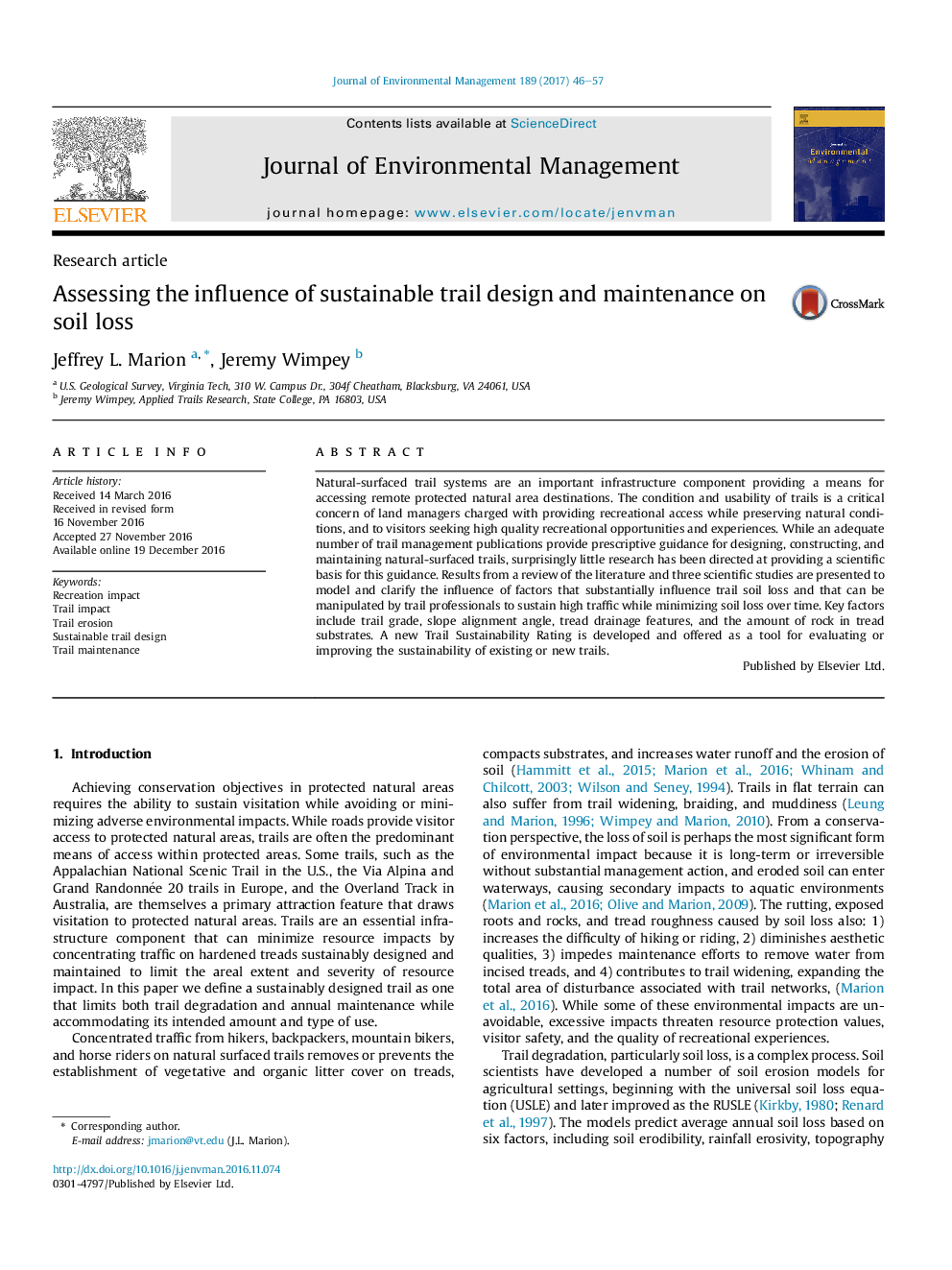| Article ID | Journal | Published Year | Pages | File Type |
|---|---|---|---|---|
| 5117062 | Journal of Environmental Management | 2017 | 12 Pages |
Abstract
Natural-surfaced trail systems are an important infrastructure component providing a means for accessing remote protected natural area destinations. The condition and usability of trails is a critical concern of land managers charged with providing recreational access while preserving natural conditions, and to visitors seeking high quality recreational opportunities and experiences. While an adequate number of trail management publications provide prescriptive guidance for designing, constructing, and maintaining natural-surfaced trails, surprisingly little research has been directed at providing a scientific basis for this guidance. Results from a review of the literature and three scientific studies are presented to model and clarify the influence of factors that substantially influence trail soil loss and that can be manipulated by trail professionals to sustain high traffic while minimizing soil loss over time. Key factors include trail grade, slope alignment angle, tread drainage features, and the amount of rock in tread substrates. A new Trail Sustainability Rating is developed and offered as a tool for evaluating or improving the sustainability of existing or new trails.
Keywords
Related Topics
Physical Sciences and Engineering
Energy
Renewable Energy, Sustainability and the Environment
Authors
Jeffrey L. Marion, Jeremy Wimpey,
